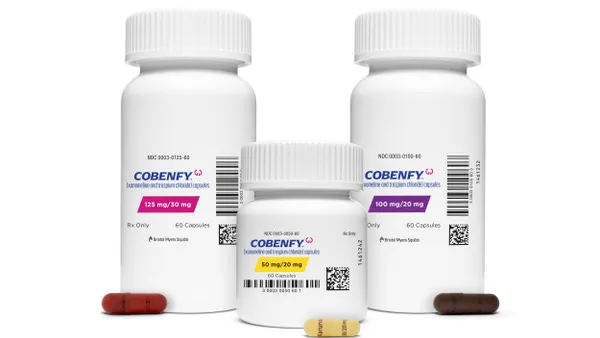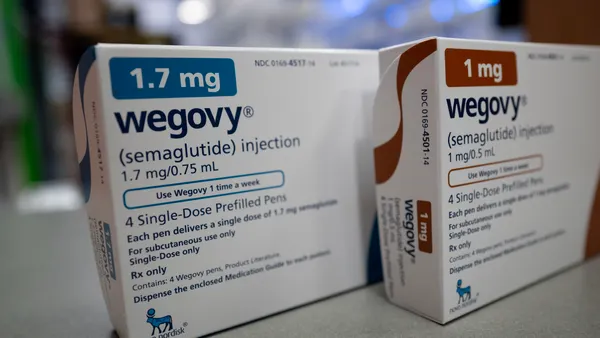While direct-to-consumer (DTC) advertising is effective at top-of-funnel awareness and driving action early in the patient journey, it cannot pull through conversions at the pharmacy. Despite massive DTC investments, pharma has not increased down-funnel conversions. In fact, Rx abandonment at the pharmacy continues to increase due in part to high out-of-pocket (OOP) costs and brand switches.
The paradox of getting less for more
Rx brands continue to invest heavily in top-of-funnel tactics—DTC campaigns, HCP promotion, awareness-driving media—while seeing diminishing returns with prescription fills and refills. Louder and more frequent promotional messaging is not increasing conversions at the pharmacy.
Another paradox: while U.S. healthcare spending rises each year, patient outcomes aren’t improving—partially due to increased access barriers. Formulary restrictions on branded drugs have jumped 37%, according to a 2024 Drug Channels Institute report. And IQVIA analyses showed that utilization management tools like prior authorization have surged 45%, and 40% more patients are now paying over $250 OOP for a single prescription. IQVIA also reported that “overall, 27% of written prescriptions are not filled due to payer rejections and abandonment by patients,” resulting in nearly one billion unfilled prescriptions annually—evidence that the system fails to convert demand into access.
Patients also face this paradox
The rapid rise of the “patient-as-payer” has added financial strain on consumers. Formulary designs continuously evolve and formulary exclusions and other restrictions increase each year, increasing patients’ cost burden. GoodRx research shows an average 39% list price increase for all prescription medications since 2014, and in 2024 Americans paid $61 billion in OOP costs for their prescription medications.
This burden persists despite the pharmaceutical industry investing over $5 billion annually in copay assistance and support programs. The disconnect? Only 3% of Americans are even aware these resources exist. Clearly, there’s a major gap between investment and impact—and it’s one the industry must urgently address.
At the same time, healthcare providers (HCPs) are increasingly forced by cost pressures and payer mandates to switch patients to lower-cost alternatives, often generics, even when those alternatives are not AB-rated. According to Blue Fin Group, 9 out of 10 callbacks result in a medication switch—jeopardizing continuity of care and potentially compromising patient outcomes.
Increasing brand awareness while Rx abandonment rises
Pharma continues to pour billions into top-of-funnel tactics with the expectation that awareness will lead to action, however, that formula no longer works. Patient demand and HCP engagement once reliably translated into filled prescriptions, however, today it breaks down at the pharmacy counter.
Patients may be aware of a brand, may even receive a prescription, but increasingly walk away without picking it up—often due to high OOP costs or insurance barriers. As a result, much of the industry's awareness investment is lost in the final, most critical step: access.
Empowering HCPs to navigate cost and access barriers
According to an American Medical Association report, 47% of U.S. HCPs are employed directly or indirectly by hospitals, which means they have less autonomy when making prescribing decisions. In this reality, making an impact requires embedding HCP solutions directly into the point of care. Digital affordability tools—such as integrated copay cards and patient access support—must be built into the prescribing workflow, enabling HCPs to offer immediate, practical support and counseling.
These tools reduce patient OOP costs, improve adherence, and relieve pressure on HCPs—all without adding complexity or cost for them or their patients. To the patient-as-payer, access and affordability are now a fundamental part of their care.
The road ahead: Shared responsibility, collective progress
There’s a growing sense of momentum across the healthcare landscape. From industry events and media narratives to stakeholder discussions, one message is clear: the time for meaningful, system-wide change is now. Yet, many pharma leaders still equate “customer experience” with enhanced marketing—focusing on the top of the funnel rather than addressing the foundational challenges of access and affordability. These aren’t peripheral issues for Access or Patient Support teams to manage; they’re strategic imperatives impacting every brand and every company.
No single stakeholder can solve them alone—meaningful and lasting change requires collaboration. Pharma, HCPs, technology partners, and platforms like GoodRx must continue to jointly eliminate barriers, streamline prescription fulfillment, and ensure that patients receive the treatments they need—without delay or financial strain. The path forward to create a healthcare system that delivers better outcomes for everyone is within reach: a digitally connected, patient-first ecosystem built on shared purpose and incentives, innovation, and trust.










